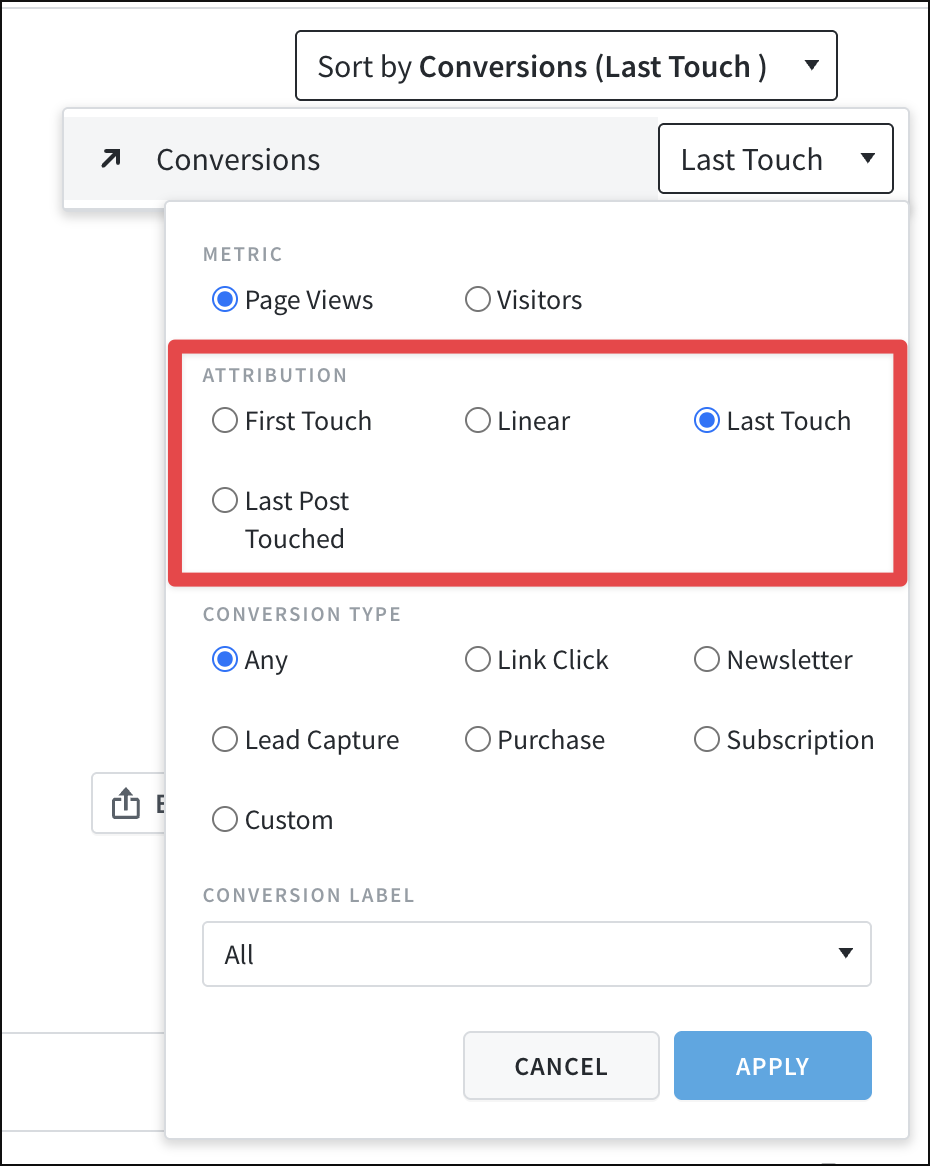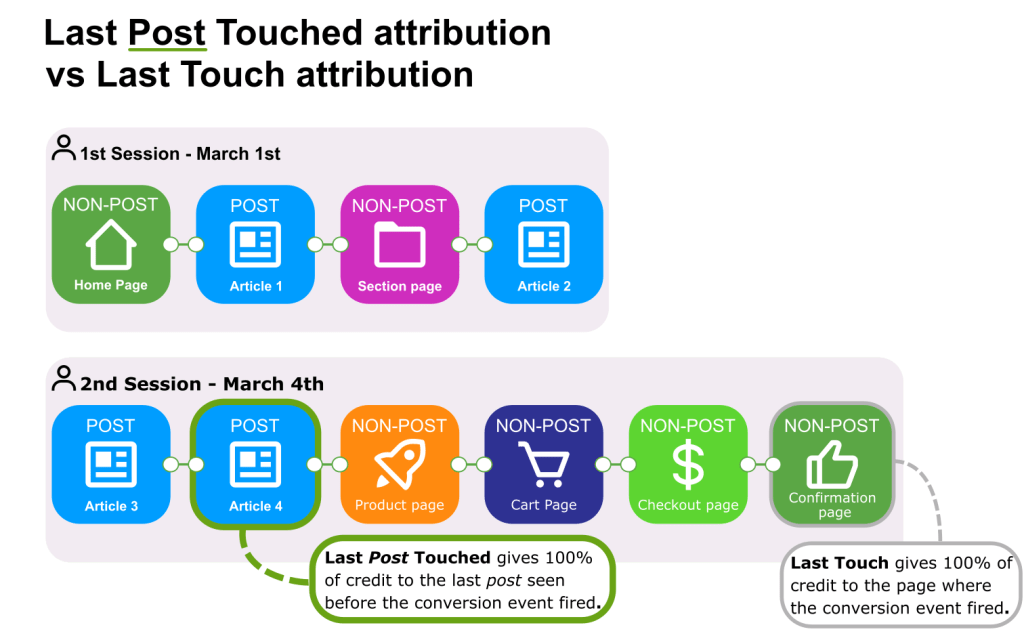How conversions are attributed
Parse.ly has four models when crediting content for a conversion: First Touch, Linear, Last Post Touched, and Last Touch. Each of these is an attribution option when filtering by conversions.

Each model reveals a unique insight — here are a few examples, with more details on each below:
- First Touch: This is where the journey to conversion begins. This might be a homepage, a landing page where a campaign directed readers, or viral or evergreen content.
- Linear: This shows all of the pages within the conversion journey, including pages captured by the other attribution models. There may be overlap with the other models, but you will also be able to identify influential content in the middle of conversion journeys.
- Last Post Touched: This can show the posts read before a conversion (or transaction) takes place on a non-post page, like a shopping cart or a form.
- Last Touch: This is where the conversion actually happens. In many cases, it could be a purely transactional page, like a landing page listing newsletters to check off. In others, it’s a post page with a newsletter popup.
First Touch
First Touch gives 100 percent of the credit to the page that was first seen in the 30 days before the conversion occurred.
This allows you to see what pages were responsible for first bringing converting visitors to your site.

In the example above, a visitor viewed six pages over two sessions and converted on the last page:
- The page “10 Interview Questions You Should Be Asking” and its author, section, and tags get credit for conversion.
- The other visted pages and their associated metadata don’t get any conversion credit.
Linear
Linear attribution divides credit equally among every page viewed within 30 days of the conversion event, including the page where conversion occurred. This allows you to see which pages contributed to a conversion.

In the example above, a visitor viewed six pages over two sessions and converted on the last page:
- All six pages and their associated authors, tags, and sections get credit for 1/6 (0.17) of a single conversion. This means that conversions using Linear attribution often appear as decimals (e.g., one page may have 10.8 conversions).
Last Post Touched
Last Post Touched attribution gives 100 percent of the credit to the last post seen before conversion occurred. This attribution model is particularly useful for seeing the last “meaningful” page a visitor looked at before purchasing something.
Note
The Last Post Touched attribution is dependent on transactional pages (order confirmation pages, shopping cart pages, newsletter sign-up pages, etc.) being set as non-posts and “meaningful content” (blog posts, landing pages, articles, etc.) being set as posts. This can be adjusted in the page type metadata provided to Parse.ly.
The example below demonstrates the difference between the Last Post Touched and Last Touch attributions:

In this example, the conversion occurred at the visitor’s final destination during their second session on March 4 — on a non-post (a confirmation page). The last post they saw was several destinations prior (“Article 4”).
With the Last Post Touch attribution applied:
- “Article 4” and its author, section, and tags get credit for the conversion. This is because Article 4 is the the last post seen before the visitor passed through several non-post pages to convert.
- Any other visited pages and their associated metadata don’t get any conversion credit.
Last Touch
Last Touch attribution gives 100 percent of the credit to the page where conversion occurred:

In the example above, a visitor viewed six pages over two sessions and converted on the last page:
- The page “5 Free Accounting Tools to Get You Started” and its author, section, and tags get credit for the conversion.
- The other pages visited and their associated metadata don’t get any conversion credit.
Attribution window
How far back does conversion attribution go? Using the Linear attribution model, Parse.ly can give credit to pages that were viewed during the 30 days leading up to conversion.
For instance, a user visits your site in three sessions. During the last session, they make a purchase.
- 31 days ago: Visits pages A and B.
- 30 days ago: Visits pages C and D.
- Today: Visits pages E, F, and G. Makes a purchase on page G.
With Linear attribution, pages C, D, E, F, and G split credit for the conversion on page G.
Multiple conversions by the same user in 30 days
A user may complete multiple conversions within the same 30-day attribution period, such as signing up for a webinar (Lead Capture) and buying a ticket to an event (Purchase):

In the example above, during the same 30-day period, the user visited six pages and converted on the fourth (D) and sixth page (F). With Linear attribution:
- Pages A, B, C, and D split credit for the conversion on page D.
- Pages A, B, C, D, E, and F split credit for the conversion on page F.
Last updated: June 09, 2025